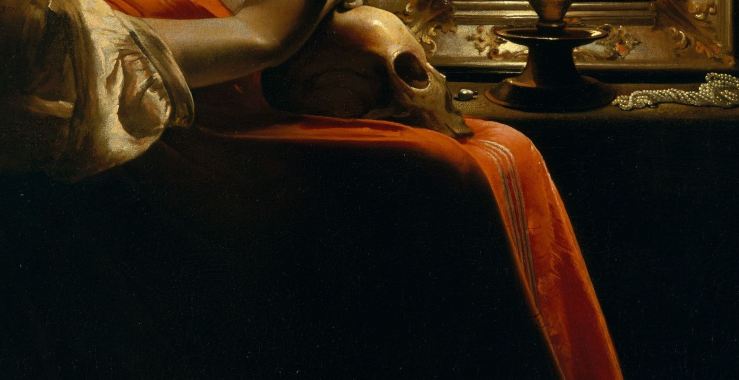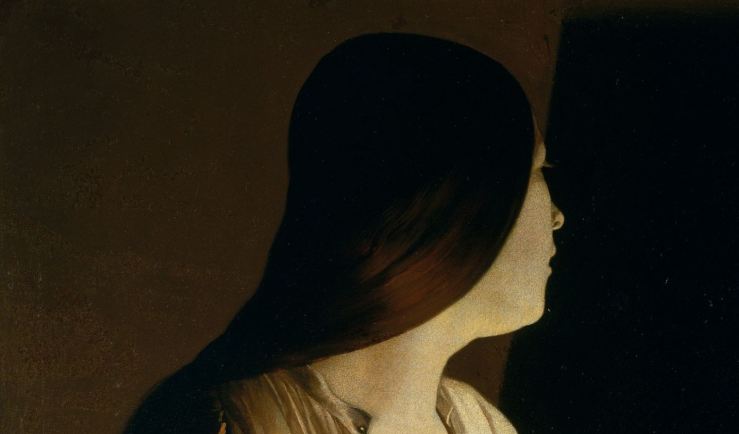Mary Magdalene, the Venus in sackcloth. Georges de La Tour’s picture does not show a woman in sackcloth, but her chemise is coarse and simple enough to be a penitential garment, or, at least, the kind of garment that shows you were not thinking of personal adornment when you put it on. Even though the chemise is deeply open on the bosom, it does not seem to disclose flesh as such, but a flesh that has more akin to the wax of the burning candle, to the way the wax candle is irradiated by its own flame, and glows. So you could say that, from the waist up, this Mary Magdalene is on the high road to penitence, but, from the waist down, which is always the more problematic part, there is the question of her long, red skirt.
Left-over finery? Was it the only frock she had, the frock she went whoring in, then repented in, then set sail in? Did she walk all the way to the Sainte-Baume in this red skirt? It doesn’t look travel-stained or worn or torn. It is a luxurious, even scandalous skirt. A scarlet dress for a scarlet woman. …
Georges de La Tour’s Mary Magdalene has not yet arrived at an ecstasy of repentance, evidently. Perhaps, indeed, he has pictured her as she is just about to repent — before her sea voyage in fact, although I would prefer to think that this bare, bleak space, furnished only with the mirror, is that of her cave in the woods. But this is a woman who is still taking care of herself. Her long, black hair, sleek as that of a Japanese woman on a painted scroll — she must just have finished brushing it, reminding us that she is the patron saint of hairdressers. Her hair is the product of culture, not left as nature intended. Her hair shows she has just used the mirror as an instrument of worldly vanity. Her hair shows that, even as she meditates upon the candle flame, this world still has a claim upon her.
Unless we are actually watching her as her soul is drawn out into the candle flame.
From Angela Carter’s short story “Impressions: The Wrightsman Magdalene.”







